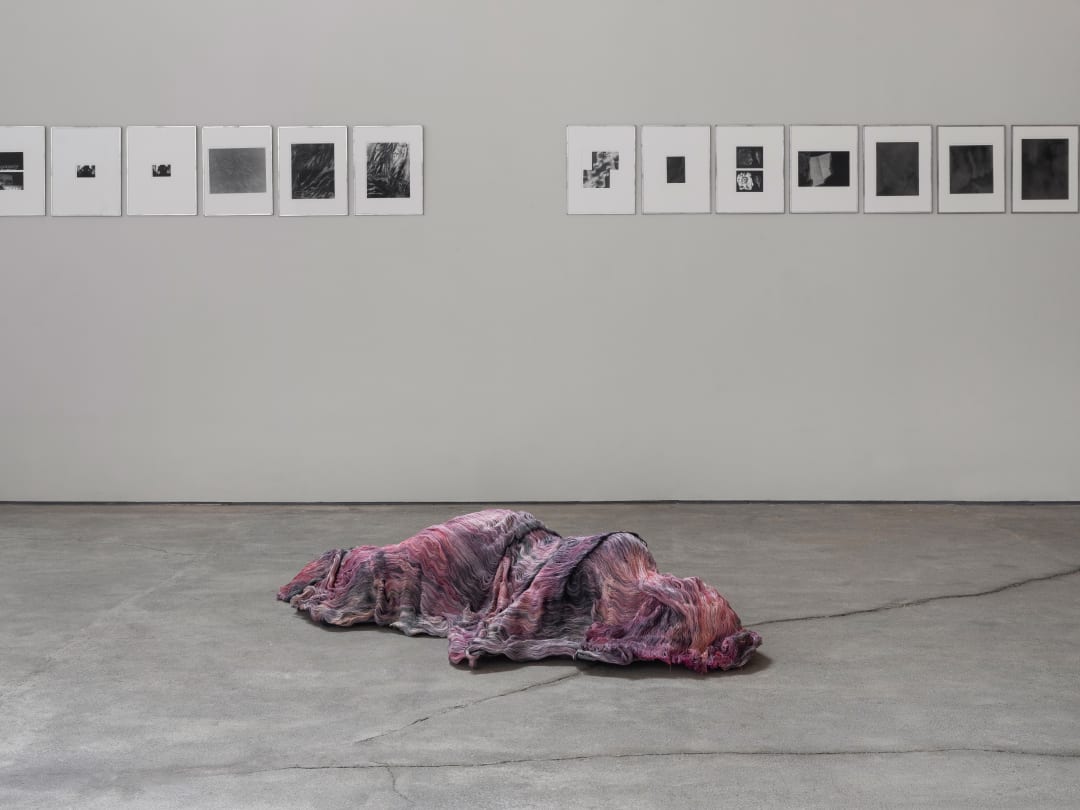El desierto de ella; Alicia, Chantal, Eunice
Solo Exhibition by Manuela de Laborde, curated by Margaux Knight – PEANA
Alice falls. A world is found.
A world where ones drop is slow and every gesture: to eat, to drink, to grow or even shrink, drifts and redefines identity. There is no linear logic, but a poetry of disarray: flowers bleed, furniture shifts and time for ever tea time.
A desire to bring into dialogue three unruly and resilient female figures lead up this exhibition: Alice, the protagonist of Lewis Carroll’s novel (Alice’s Adventures in Wonderland, 1865), the Belgian filmmaker Chantal Akerman (1950–2015) and the Costa Rican poet, who lived and died in Mexico, Eunice Odio (1919–1974). Each, with unique spontaneity, profoundly questioned their reality and blurred the boundary of self and other, undermining in the process any fixed identity. As avant-garde figures, they transformed opposition into a mirror and active wander towards novelty.
To represent their voice, the desert asserts itself as its symbolic landscape of revelation and absence. While the labyrinth is interpreted as the architecture of intimacy. For Manuela de Laborde, these virtual and alternate spaces positively render features of her cinematic practice.
The exhibition is therefore conceived as animated landscape.
Upon entering the lobby, a projected film, performed by her sister Pía, greets up with a current pool of tears
enough to dry-out a hibiscus field.
Followed then, by confrontational glass monoliths swept with pigments, sand and salt.
Surrounding them, a horizon of analog photography framed in lead. Narrate her “correspondence” with Alice, Chantal, and Eunice:
«Me busco revelada y transida en otros nombres»1 (E.Odio).
The heart of the space, shelters the monumental projection of an eviscerated trout: we enter a body, an act, an emotion.
At hand, two textiles that like fluid texts evoke thread as memory and repetition as care.
The course “ceases” with a tactile and incorporated self-reflection: a tray of edible surplus cased within crystallized salt.
Eunice Odio, volcanic poet, describes the body as ocean, flor sangrante (bleeding flower). For her, emotional chaos is substance. «Al borde estoy de herirme y escucharme»2 (On the verge of harming and listening to myself) resonates with the tout’s film: a knife severs, the interior revealed. Permeated by ordinary pains, the dense inner world of Manuela de Laborde gestates her work. In Je, tu, il, elle (1971), Chantal Akerman locks herself in, films herself, reflects, loves. Manuela discovered this film when she was 26—almost the director’s age at the time—and it for ever transformed her seeing of Cinema, and learned of the radical side of self-reference. For her, film asserts itself as a space to slow down and drift, act that aligns with her vision of minimalism as what is intimate and essential.
“Time is a living thing,” the Mad Hatter tells Alice. Influenced by theories of kinetic art, especially those of the critic Guy Brett, Manuela conceives her work as animated process—storyboard, essay, maquette or film. She does not confine herself to a single discipline. Instead, freely crosses media, formats, and techniques with total and intuitive creativity. It’s not about mastering a technique, and more about undertaking a reflective and affective relationship with the act of making.
Acts need not be perfect, but must be precise. This conceptual and critical production—at times hard to follow—is free of authority. At times, even rebellious toward itself. The practice aligns with the feminist tradition that values domestic activities and so‑called “minor” arts. Appreciating them as careful subject formation. Chantal Akerman beautifully filmed mundanity with almost painful patience: minimal gestures become resistance and kitchens, gentle prisons. The bed, the bathtub, the darkroom become places of alchemy, transforming the everyday through salt, baths, red lights and slow revelations. "Pour faire du cinéma, il faut se lever" (To make films, one must get up.) (C. Akerman) resonates as a physical and existential exhortation.
Like her textile work, union does not come through embroidery but suture. The needle traces an anatomical and piercing dialogue. Textile becomes a digital image, pixelated and distorted, stretched to infinity. An almost erotic gesture, where thread touches, penetrates, the intent to bind by suturing oneself. Emerging forms adapt, like reversed water or a glove molding the body.
Manuela de Laborde explores the aesthetic of extreme proximity: so up-close things gets blurry, opening a fissure onto other realities. She admires the work of Spiritualists like Georgiana Houghton, that conjured presences and considered abstraction a sign of connection. Alchemy, dreams, and fantasy form the imaginary foundation where materials become “energetic mirrors” (G. Bachelard). Working with matter summons invisible forces.
Symbols and materials circulate as persistent presences: red, as an emotional trace; salt, marine residue that preserves and corrodes; hibiscus, emotional diuretic; lead, weight of inheritance and alchemical potential.
A poetics of incorporation runs through the project: from the sugar Chantal eats compulsively, to Eunice’s carnal impulses, to the magical commands of Wonderland—eat me, drink me. It is not about representing these women, but of somehow internalizing them, as one infuses with herbs, or lead slowly penetrates.
El desierto de ella; Alicia, Chantal, Eunice floods with the imagery of the pool of tears. Tragedy runs quietly through them: Eunice dies in her bathtub, Chantal takes her life in Paris, and Alice’s world is haunted by the constant threat of decapitation. They each carry a sharp awareness of finitude, of bodily and spiritual dislocation.
One can fall.
One can bleed, float, dissolve.
One can be reborn, slightly closer to oneself.
“I’m opening out like the largest telescope that ever was! Good‑bye, feet!” —Alice
Margaux Knight

